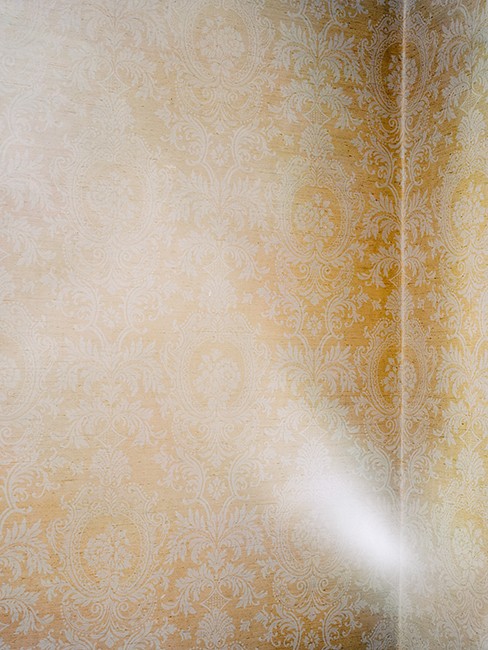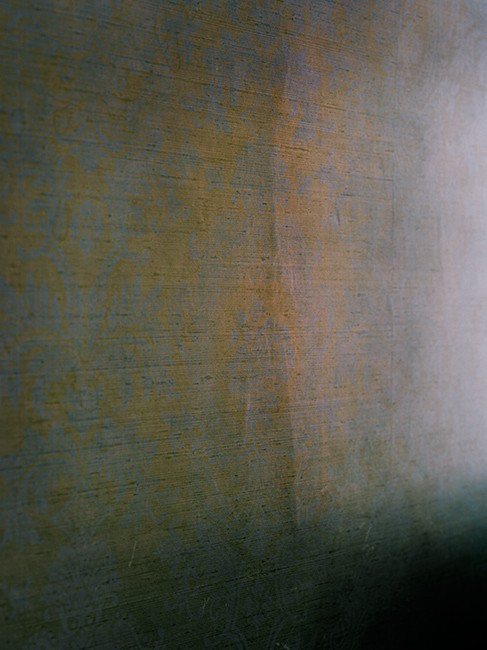Q&A: S. Billie mandle
By Jess T. Dugan | January 14, 2016
S. Billie Mandle received her BA in English and biology from Williams College and an MFA in photography from Massachusetts College of Art and Design. She is the recipient of a Whiting Fellowship, an Artist Fellowship in Photography from the New York Foundation for the Arts, and an Individual Artist Grant from the Brooklyn Arts Council. Photographs from series Reconciliation were selected for the 25th Hyères Photography Festival in France. Her work has also been nominated for the Prix Pictet and the Paul Huf award. She is an assistant professor of photography at Hampshire College and lives in Massachusetts.
Jess T. Dugan: To begin with, could you tell me a little bit about your working process? How do you conceive of a project and what is the process for bringing it to fruition?
S. Billie Mandle: I enjoyed thinking about this question – but am still not sure if I have a good answer – process can be so nebulous. Each of my projects begins with a different impetus and takes its own weird path. Often I am drawn to something visual about a subject or I want to question and explore a place. All of my projects require negotiating access to a location – access to churches, labs, even parking garages. This process often takes many phone calls, letters, interviews and lots of waiting. I also do quite a bit of research, looking into the history of a place and reading about a subject. Overall I would describe my working process as slow! I photograph slowly with a large format camera and my projects unfold slowly, often over many years. It takes me a while to understand my subject, and sometimes to even understand why I am photographing it.
Saint Christopher, from Reconciliation
JTD: I’m interested in your series Reconciliation. What inspired you to begin this project? Did it come from personal experience or a more universal interest in the subject?
SBM: I began the project because I wanted to explore the idea of forgiveness – what does it mean to forgive? How is it possible? What are the rituals our culture has for forgiveness? I was raised Catholic – went to mass every Sunday, even taught catechism. As I thought more about the idea of forgiveness I realized that for me it was intertwined with the ritual and space of Catholic confession – it was what I knew, it was how I imagined forgiveness.
I was also fascinated by the architecture of the confessionals. They are small, intimate spaces that are rarely seen (it is often dark when you confess). The rooms seem to hold all the past confessions. Most are lined with soundboard and it is as if the confessionals absorb the voices of each person who confesses and one confesses surrounded by these traces. I love that idea – that to make your confession you must face the remnants of everyone who came before.
My initial interest in forgiveness is a bit more complicated but stemmed from a difficult period in my life. Reconciliation is probably my most personal body of work. Throughout the project, I did quite a bit of research – there was so much to the confessional and the ritual I didn’t understand. My relationship to the space changed over the years. I learned a lot.
JTD: Your projects often focus on a specific place, yet you transcend the specifics in pursuit of another kind of engagement. I love this idea from your statement for San Mateo I: “I wonder if it is possible to turn places with a singular purpose into images that invite speculation.” How do you think about this idea in your work, and to what extent are you attempting to create a space for the viewer to slow down and engage deeply with the worlds you are depicting?
SBM: Thank you – you expressed it beautifully – yes I very much try to create a space for the viewer to slow down and engage deeply. I hope that through this engagement, the viewer might discover further questions rather than answers – an awareness of all that this image does not disclose. I try not to transcend the specifics too much but rather to go deeply into specifics as a way of seeing something more. I am interested in the idea of studying something carefully as a way to arrive at a sense of what is unknown. Flannery O’Connor said, “[t]he longer you look at one object, the more of the world you see in it…”.
From Sabn Mateo I
With San Mateo specifically I wanted to figure out how to convey a sense of complexity within spaces that are narrow and ordinary. By removing the parking lines and signs from the garages, something specific is removed, but other details and imperfections become more pronounced. I think this change allows for a new kind of relationship to the space – perhaps opening the spaces for speculation. I am interested in what lies beneath the surface idea of a place – or an image – and struggle with how to get at that through photography. It’s one of the challenges of photography – how to convey depth through a medium that can only transcribe surface.
JTD: Photography, as a medium, is of course inherently connected to the concept of time; but you seem to slow it down even further, linking past and present. How significant is the idea of time in your photographs?
SBM: I often think about stillness rather than time. In Reconciliation my exposures were very long – regularly around 20 minutes – gulps of time rather than fractions. Long exposures seemed an appropriate way of absorbing the presence of all the people who had confessed. But even in other projects it is the stillness of photography – the distillation of moments into a single frame – that I am interested in playing with.
In Corners, from Circumference
In a recent project, Circumference, I photographed Emily Dickinson’s bedroom for over a year at different times and at different seasons. The light changes across the images to reveal time progressing – not something specific in time but simply the way it unfolds. I use the quality of light in the room to link the past and the present, thinking about the light that Dickinson experienced and wondering how the camera can translate it. This project is also about looking at images slowly – paying attention to subtle changes over a period of time. I wanted to explore a slow kind of attention, one that is different from the accelerated way of looking at images online.
At Window, from Circumference
JTD: Much of your work seems to be inspired by the natural world, whether through direct references to biology or through your use of space and light. Where did this interest come from and to what extent does it influence your process as a photographer?
I don’t typically think of my work as being inspired by the natural world – but you are absolutely right – it is. I grew up camping in Northern California and studied biology in college. Recently I moved to Western Mass after living for years in New York City and have been thinking about how this change in environment might shape my photography.
Arabidopsis thaliana, no. 32, from Model Systems
One thread throughout my work is the idea of interiority. I like the way nature functions metaphorically to convey something, like interiority, that can’t be represented visually. I think this ties back to a realization I had in college. One year I took two classes, a biochemistry class and an ecology class. In the biochemistry class we studied chemical reactions – like photosynthesis. In the ecology class we studied and identified leaves. One day it struck me that the simple shape of a leaf belied the complex chemical reactions I was studying in the biochemistry class – and that the chemical reactions were necessary for the simplicity of the leaf. The two were intertwined. This idea, that what appears easily understood contains hidden complexity, informs and shapes my work; I’m interested in what is revealed and what is disclosed in seemingly simple spaces.
Arabidopsis thaliana, no. 21, from Model Systems
JTD: Where do you find inspiration? What are you currently excited about?
SBM: Inspiration: Books (just finished The Door by Magda Szabó and loved it – looking forward to reading David Campany’s Handful of Dust), art whenever and wherever I get to see it, movies, family, friends, students, walks with the dog, food, music, the news, and chance.
What else? I’m excited to see the new film by Jia Zhangke. And I haven’t seen the new Star Wars yet either!
JTD: What’s next for you as an artist?
SBM: Like everyone else I am working on putting together a book – right now of the Reconciliation project. I’m on sabbatical this spring and plan to begin a few new projects as well – there is a 100-year-old hospital near my house that I am trying to get access to photograph.
All images © S. Billie Mandle

















